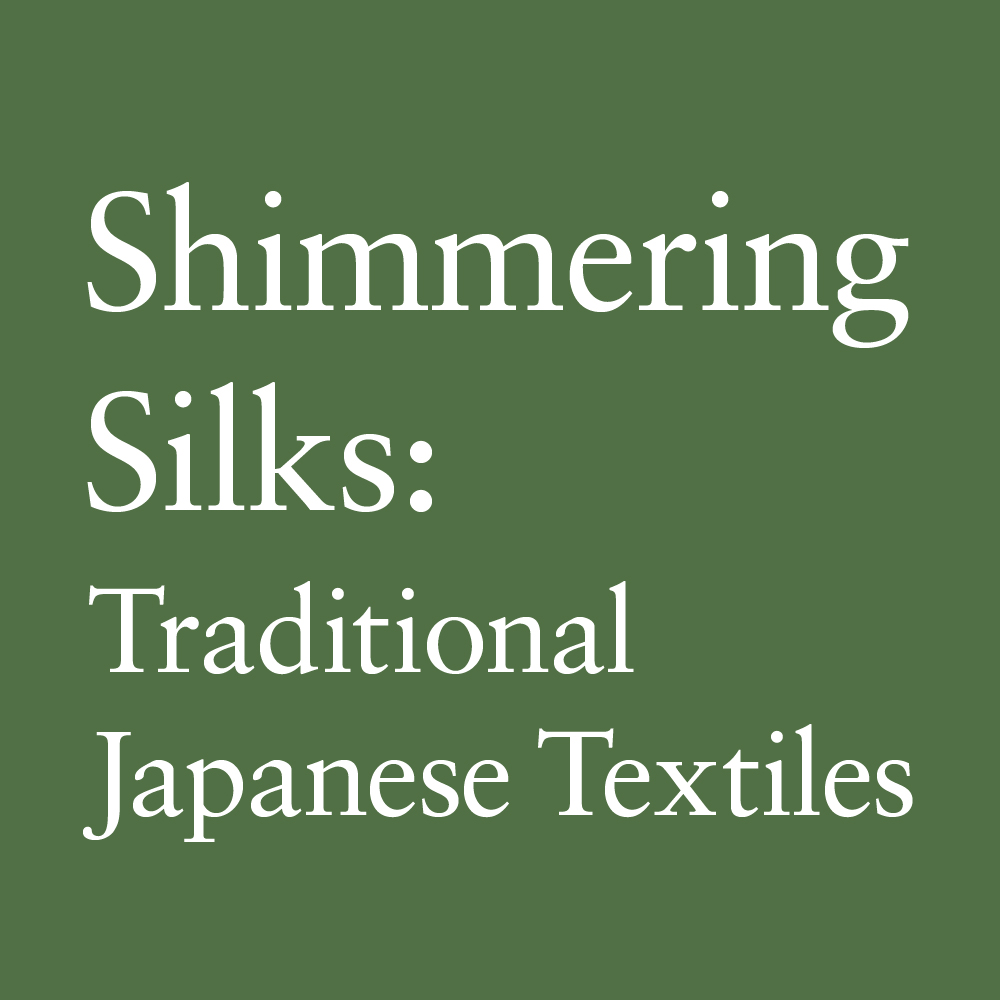Japanese; Wrapping Cloth (fukusa), about 1769; silk; 31 ¼ inches x 25 inches; Saint Louis Art Museum, Museum Purchase 111:1919
This exhibition audio guide celebrates silk pieces from the collection of the Saint Louis Art Museum, which has been collecting fine Japanese textiles for more than a century.
-
Access and Assistance
Free Public Wi-Fi
The Saint Louis Art Museum offers free Wi-Fi to visitors. From your device, access the SLAM_GUEST network.
Large Print Labels
Large-print labels are available on your own device and upon request at the Taylor Hall Welcome Desk.
AUDIO GUIDE TRANSCRIPT
The audio guide transcript is available to view on your own device.

Introduction
- Transcript
Speaker
Philip Hu
Curator of Asian Art
Saint Louis Art MuseumHello, my name is Philip Hu, and I’m the curator of Asian art at the Saint Louis Art Museum.
Welcome to the exhibition Shimmering Silks: Traditional Japanese Textiles, 18th–19th Centuries. This exhibition presents a selection of 18th- and 19th-century Japanese textiles from the Museum’s collection. Some of the pieces were worn by Buddhist priests during ritual ceremonies, while others were made for special occasions, such as weddings or theatrical performances. There are also examples of textiles made for decorative purposes or as furnishing fabrics.
Whether woven, brocaded, or embroidered, these sumptuous silk textiles are beautifully designed and exhibit very high levels of technical expertise. In order to fully appreciate the details, please do look closely at the materials and motifs on all the pieces.
Most, if not all, of these pieces have not been previously exhibited, in some cases, for more than a century—since 1919, when they were first acquired by the Museum.
Because these textiles have not seen the light of day—or the artificial light in galleries such as this one—for a very long time, the colors are exceedingly well preserved. In order to keep them in good shape for generations to come, the lighting level in this gallery is deliberately kept fairly low so that any potential fading is minimized during the course of the display period.
I hope you will enjoy this selection of traditional Japanese textiles from the Museum’s collection as much as I have in curating this show.
- Gallery Text
Shimmering Silks: Traditional Japanese Textiles, 18th–19th Centuries
Silkworm cultivation was introduced to Japan from China during the 3rd to 4th centuries. The shiny fiber spun from the insect’s cocoon enabled the development of rich textile traditions. Early Japanese silk textiles exhibit Chinese-inspired patterns and designs, while later examples reveal the development of new types of garments and motifs.
Traditional silk textiles in Japan were primarily produced in the ancient capitals of Nara and Kyōto. They supplied the imperial family, hereditary nobility, feudal lords and ladies, high-ranking Buddhist clergy, and the upper levels of civil society. When the city of Edo was ruled by shōguns or military dictators between 1615 and 1868, significant quantities of silk textiles were also manufactured there. The industry continued when the city was renamed Tōkyō in 1868.
The Japanese have long regarded silk textiles as luxury items. In addition to the high cost of raw materials and the time and skill required to weave the cloth, silk could be embellished with brocading, embroidery, or hand-painting. The most stunning traditional Japanese silk textiles were used for imperial and Buddhist ceremonies, Kabuki and Nō theater performances, formal wear, and wedding costumes. The opulent quality and shimmering appearance of silk fibers enhanced special occasions whenever worn or displayed.
The Saint Louis Art Museum has collected fine Japanese textiles for more than a century. Some were purchased, while others were gifted by patrons and donors over many decades.
This exhibition is supported in part by the McDonnell Textile Endowment.
